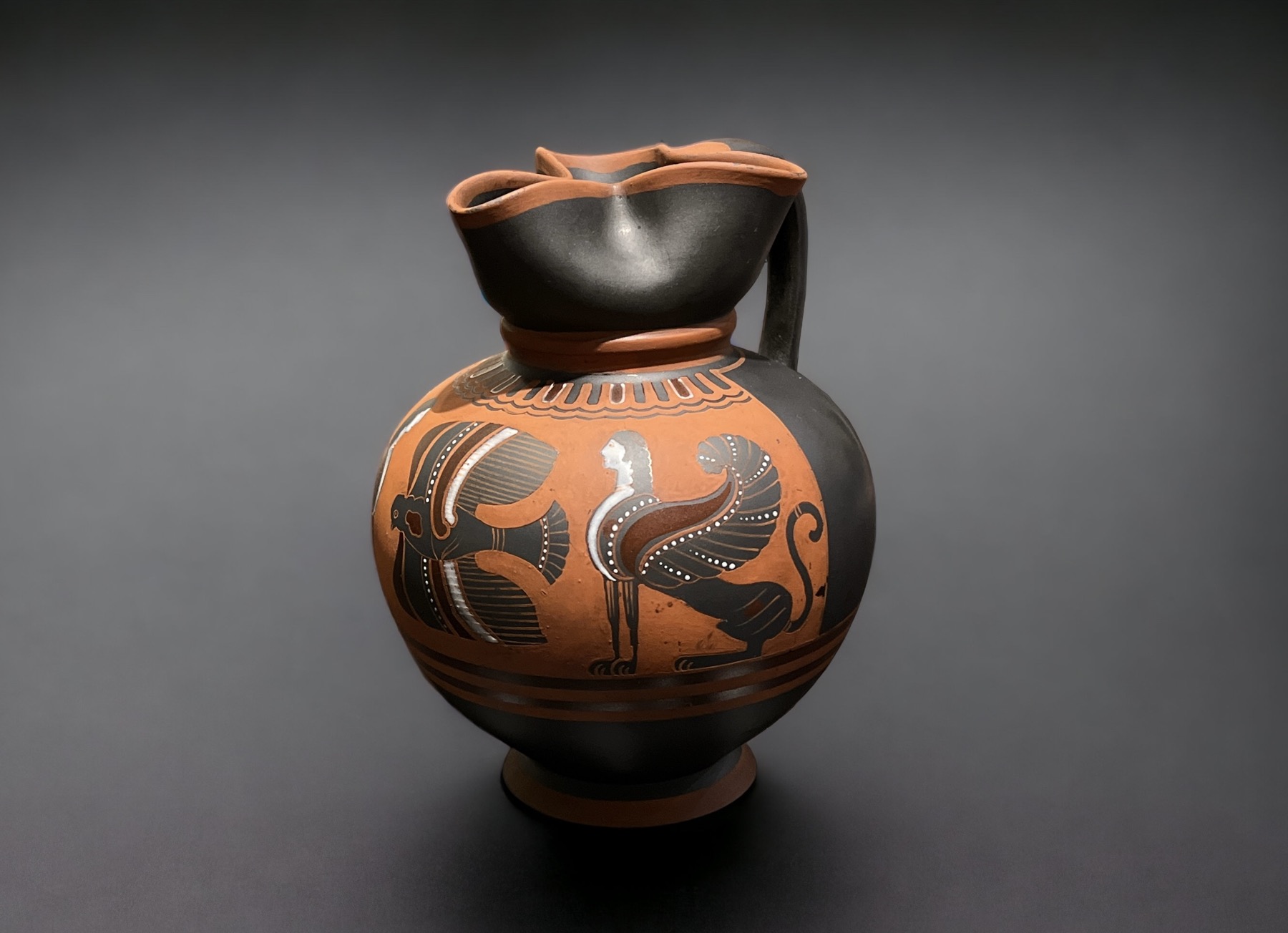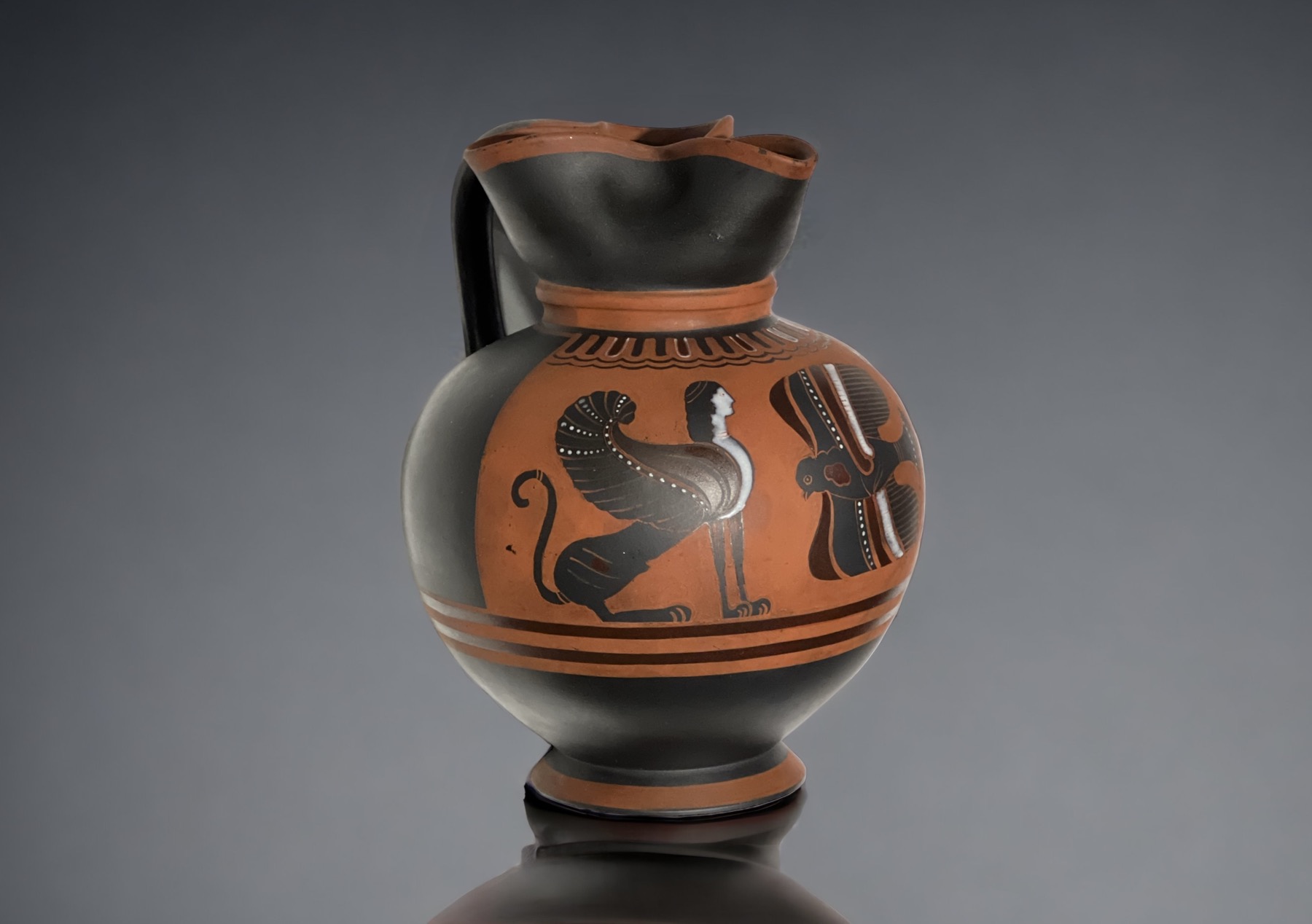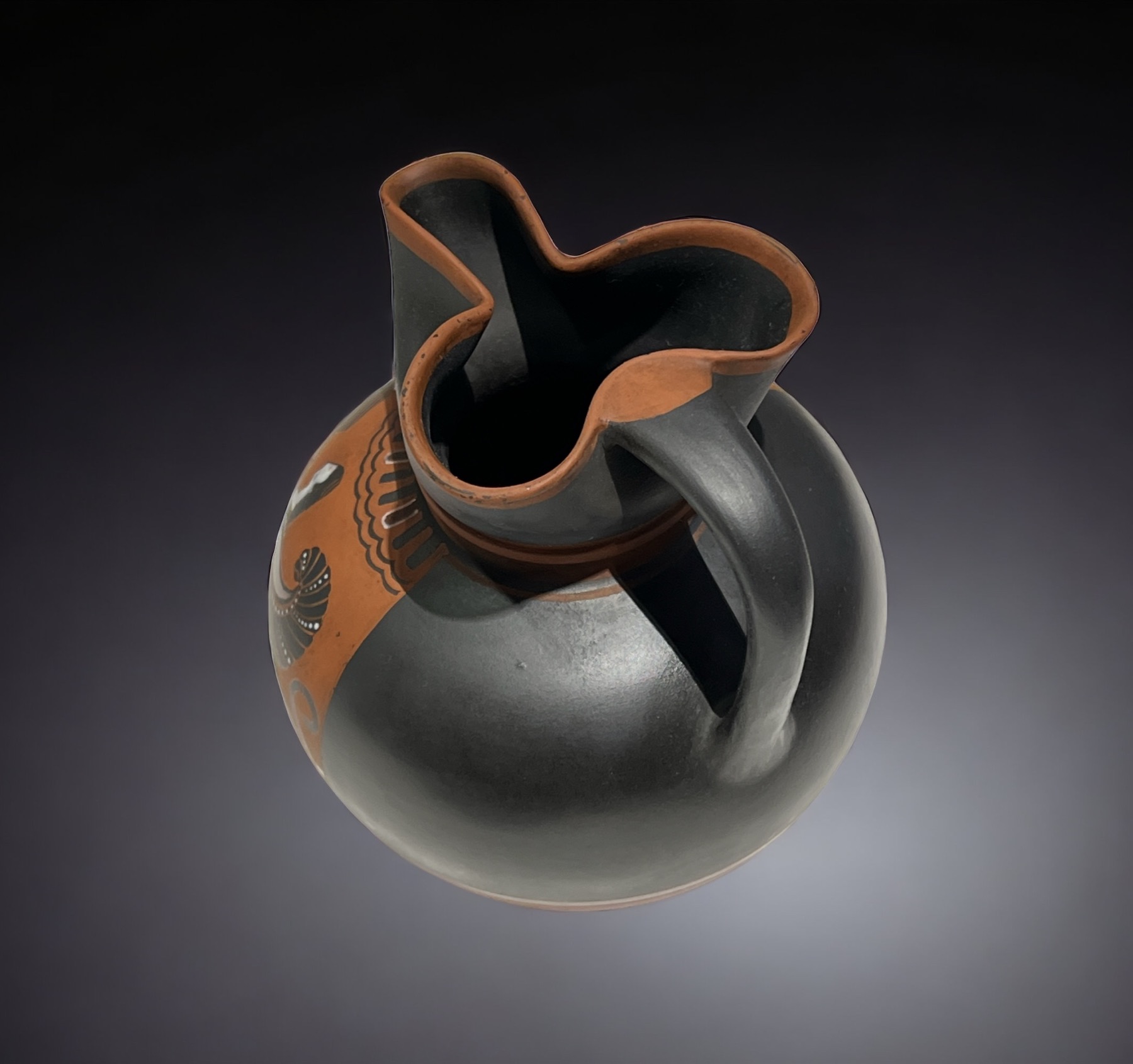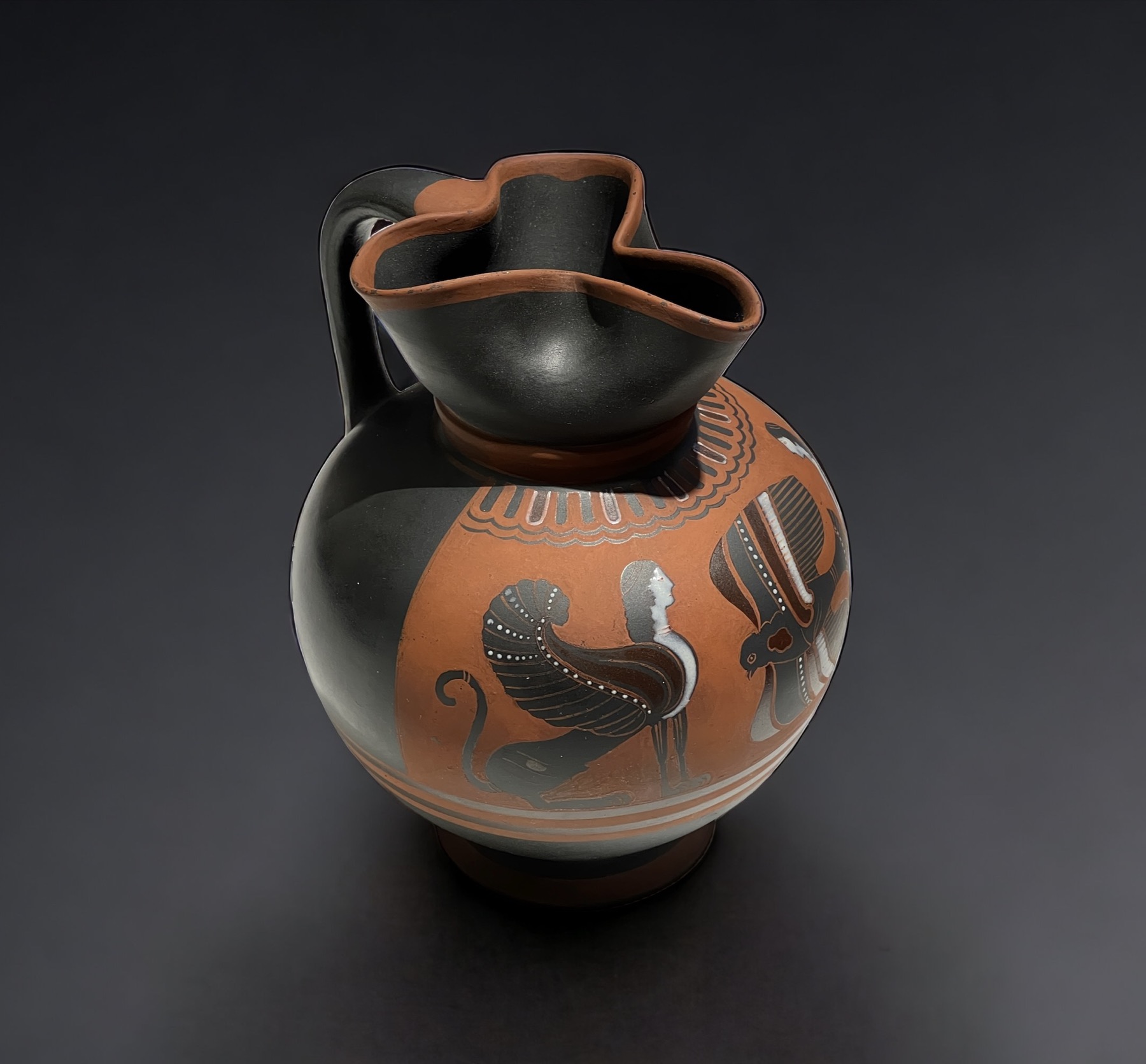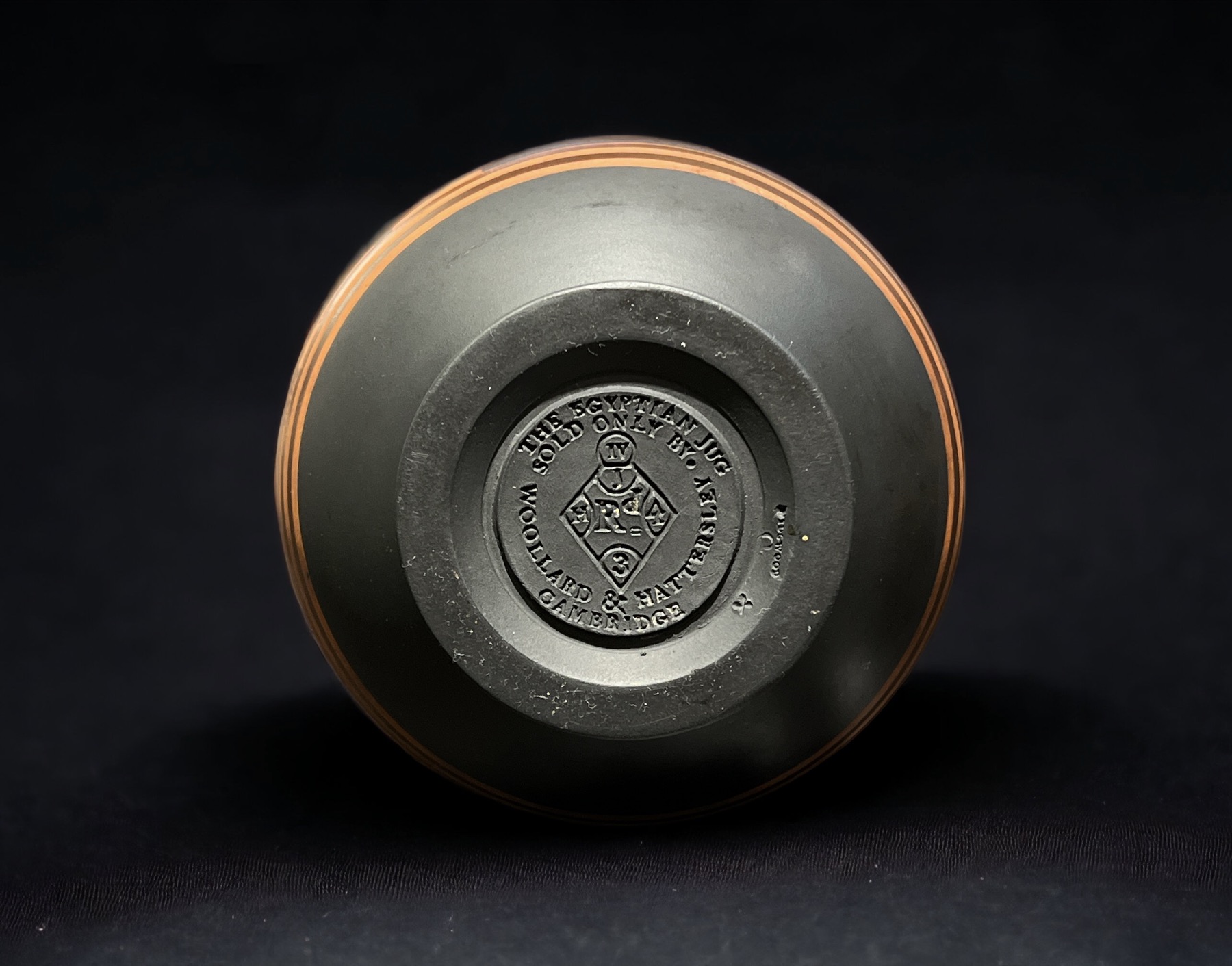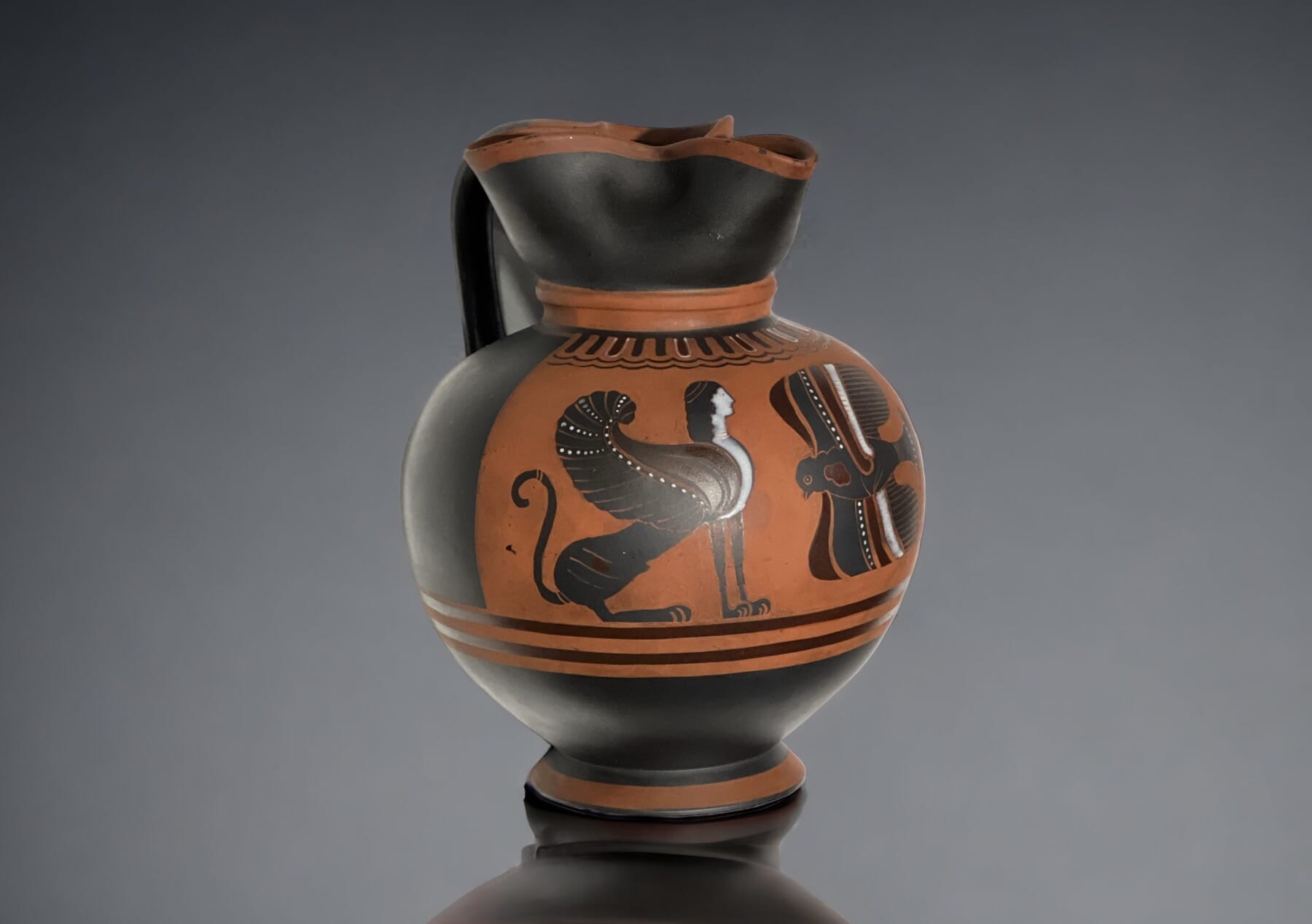
This rare piece of Wedgwood came to Moorabool recently, and is quite a remarkable piece.
Rare Wedgwood ‘Egyptian Jug’, modelled in black basalt after an Ancient Greek oinochoe, with a faithful painted ‘black-figure’ style panel featuring a bird in flight flanked by two facing sphinx, defined by terracotta slip painted ground colour, with bands below to the foot & to the trefoil lip, the figures with white enamel highlights.
Large impressed registration triangle, with circular inscription “THE EGYPTIAN JUG / SOLD ONLY BY º / WOOLLARD & HATTERSLEY / CAMBRIDGE”. , also ‘WEDGWOOD” and modeller’s marks.
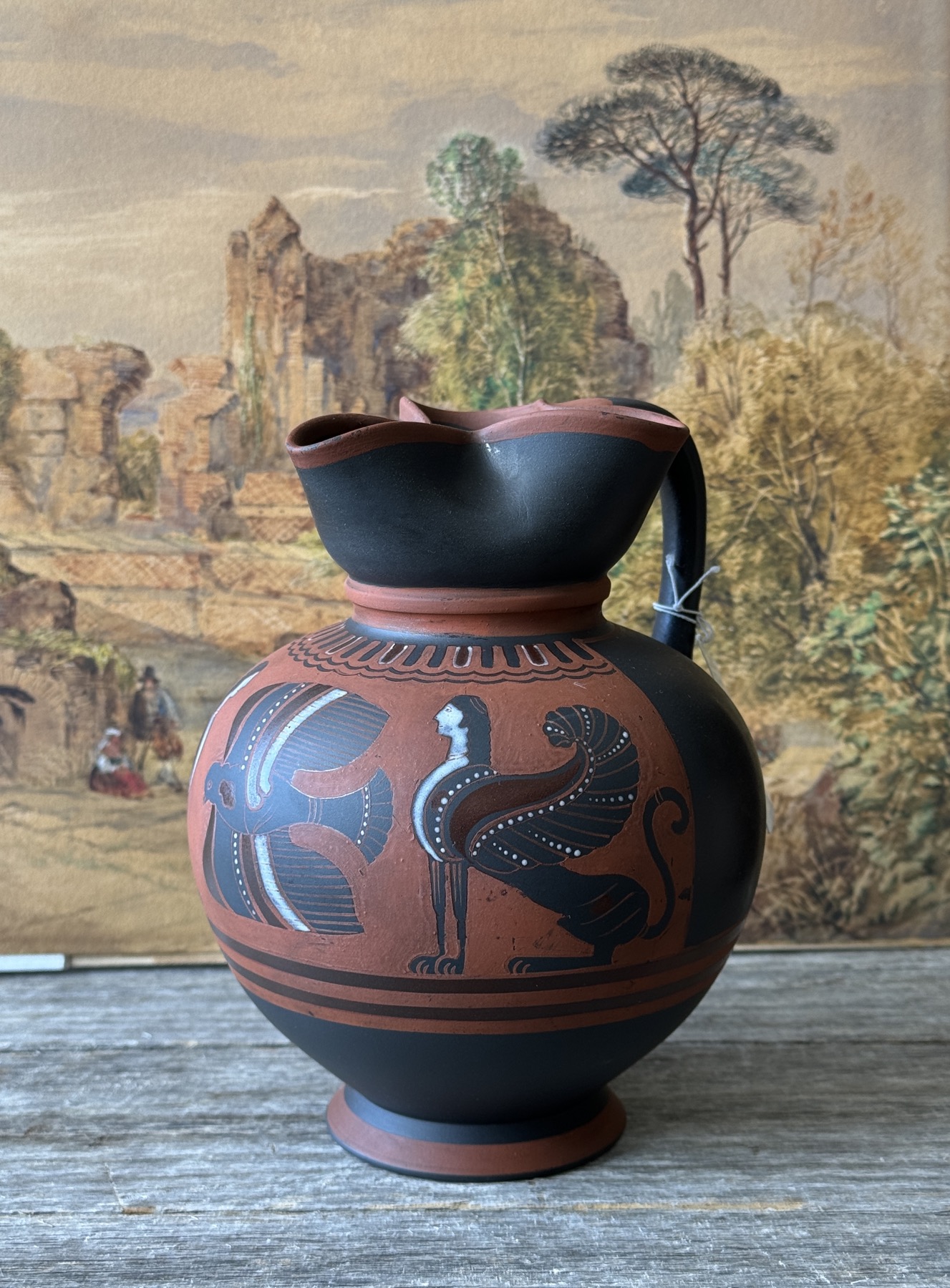
This rarity was made for Woollard & Hattersley, who had the design registered in April 1854 as ‘The Egyptian Jug’ (ref. British Museum’s description), and made at Wedgwood. Established in 1761, Woollard & Hattersley were grocers, who also listed themselves as ‘ University Providers’. Their adverts list the various beverages they stocked, no doubt in great demand in the many Cambridge University halls. This jug is sometimes listed as an ‘ale jug’, and would be quite useful as one – perhaps a promotional giveaway of the early Victorian period….
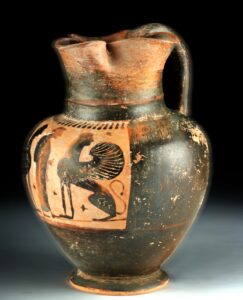
It is a superb example of the interest in re-imagining the classical world through the ‘revival’ movements – with one glaring mistake: although claiming to belong to the ‘Egyptian’ removal, it is in fact a faithful copy of a Corinthian Greek archaic style oinochoe, dating to the 6th century BC!
There were several versions made. Although apparently not in the literature, there are two examples in auction records that have a clue to the ambiguous ‘Egyptian’ naming: they are impressed-marked “THE CANTERBURY JUG” instead of “THE EGYPTIAN JUG” – but then the decorator of the jug has painted over the top of the impressed mark, with “EGYPTIAN” !
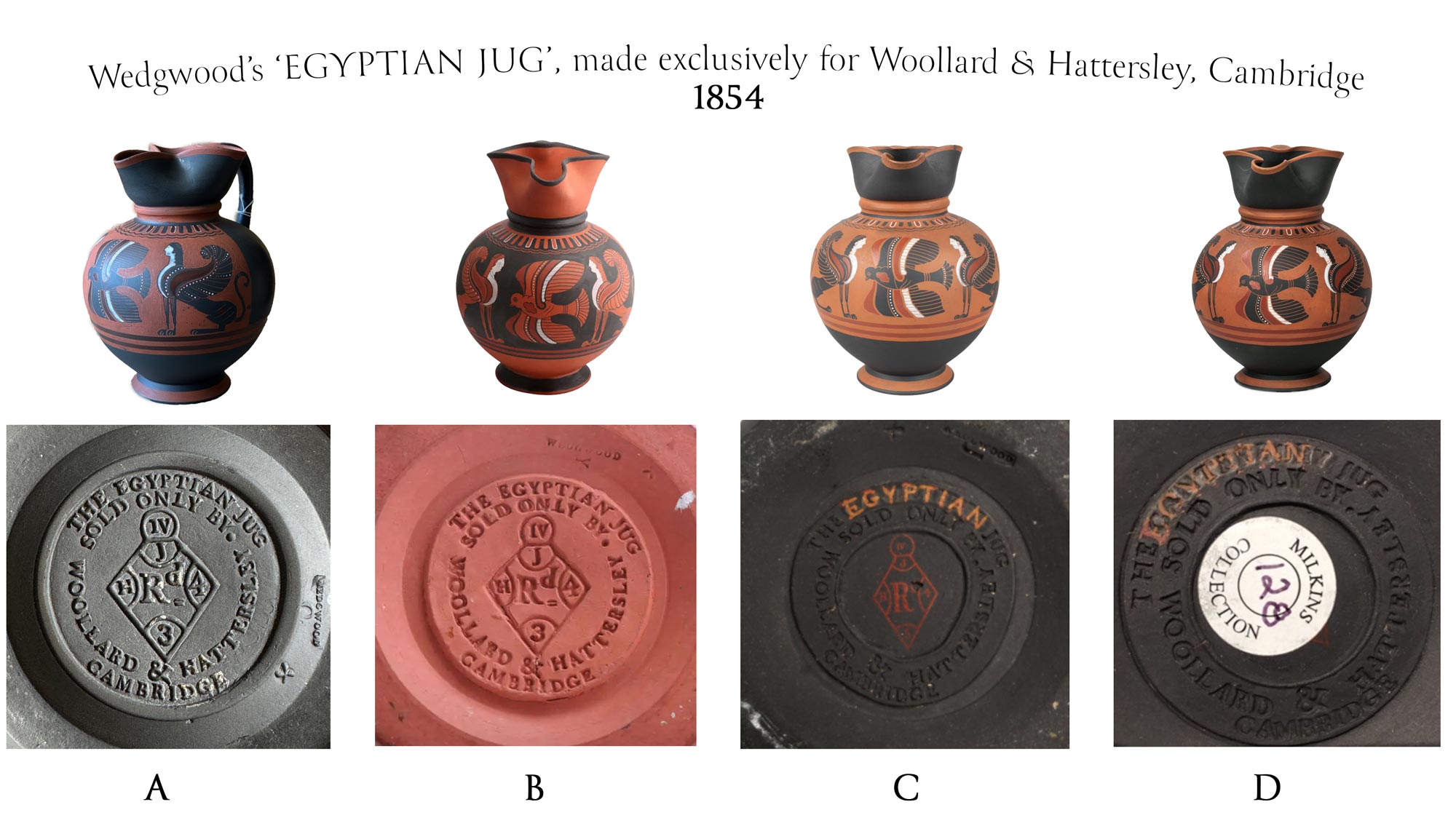
A- example @ Moorabool Antiques, solid black body with red painted background EGYPTIAN JUG
B- solid red ware example, the background painted in black – EGYPTIAN JUG
C- solid black, red printed registration diamond, red painted background CANTERBURY / EGYPTIAN
D- solid black, red printed registration diamond, red painted background CANTERBURY / EGYPTIAN
‘The Canterbury Jug ‘ was perhaps a reference to an example of a Greek oinochoe jug, in the collection of an antiquarian of the region, as yet untraced. The design was registered in 1854, but promptly re-named, as shown by examples with ‘Egyptian’ painted over ‘Canterbury’. The marking stamp was then modified for the following products, creating the inaccurate name ‘Egyptian Jug’. It is a rarity amongst Wedgwood products due to the registration & patron mark.
A curios example sold in America recently (C) bears the registration diamond for 1854, but also a painted inscription for the word ‘Egyptian’. Careful examination reveals a different impressed word beneath – ‘CANTERBURY’ – so originally it was inscribed ‘THE CANTERBURY JUG’. Another example was sold in America with the exact same feature (D), meaning it was not a unique production issue. We can conclude this mark was original, but for some reason, the name of the custom-order by Woollard & Hattersley was changed to ‘EGYPTIAN’. Subsequent productions also differ in the way the registration diamond is shown; one is printed on in red, while the other is impressed.
